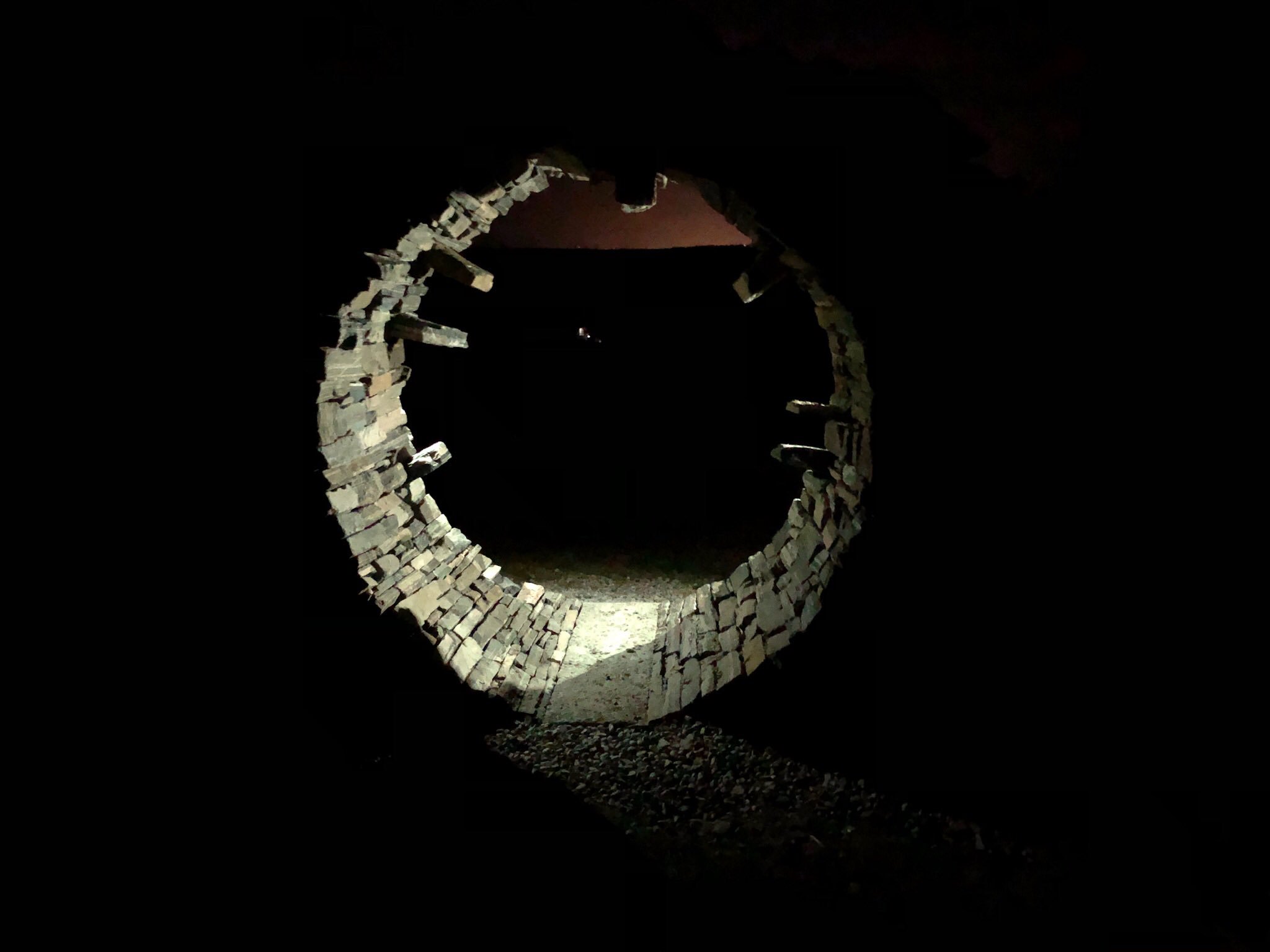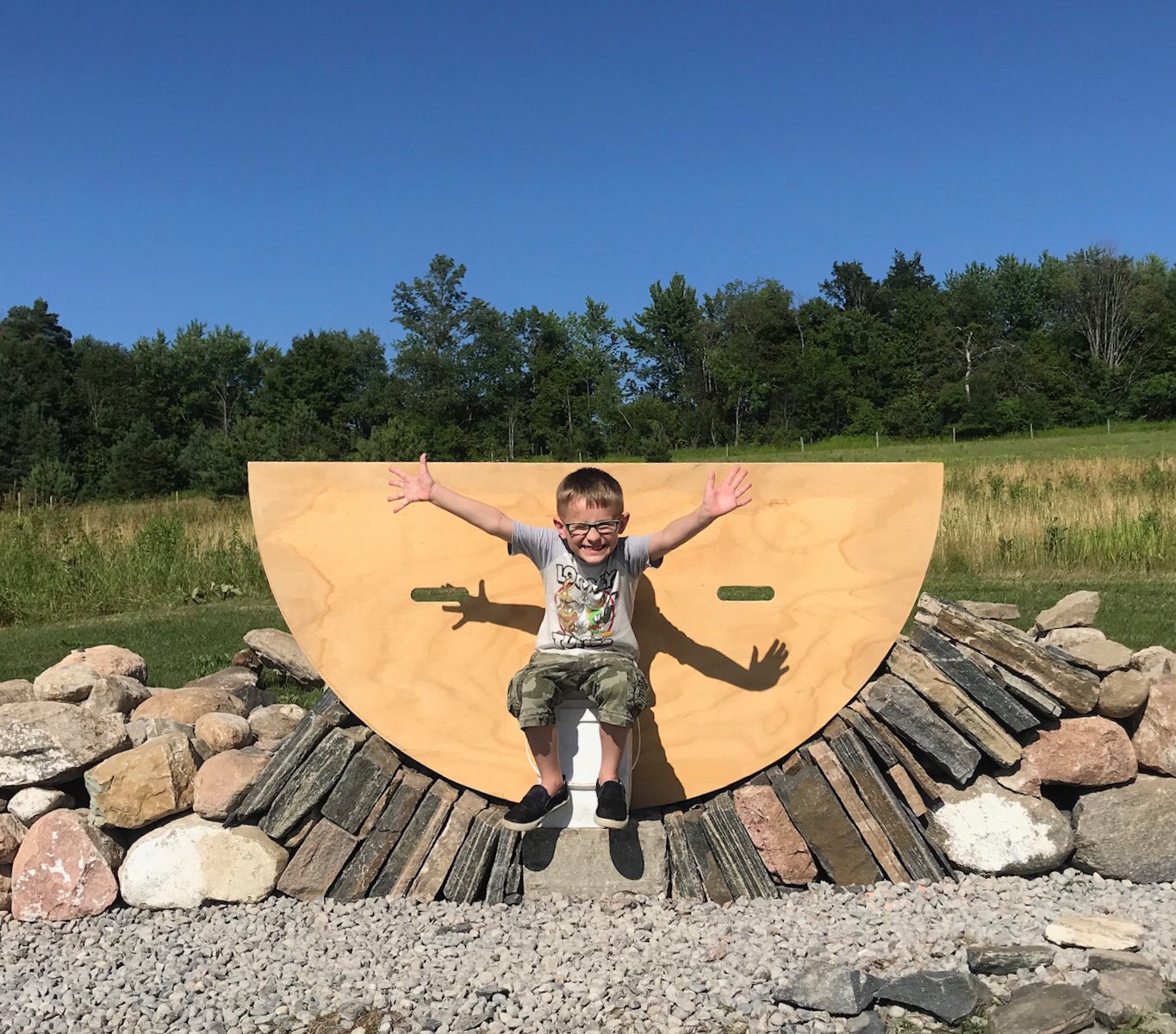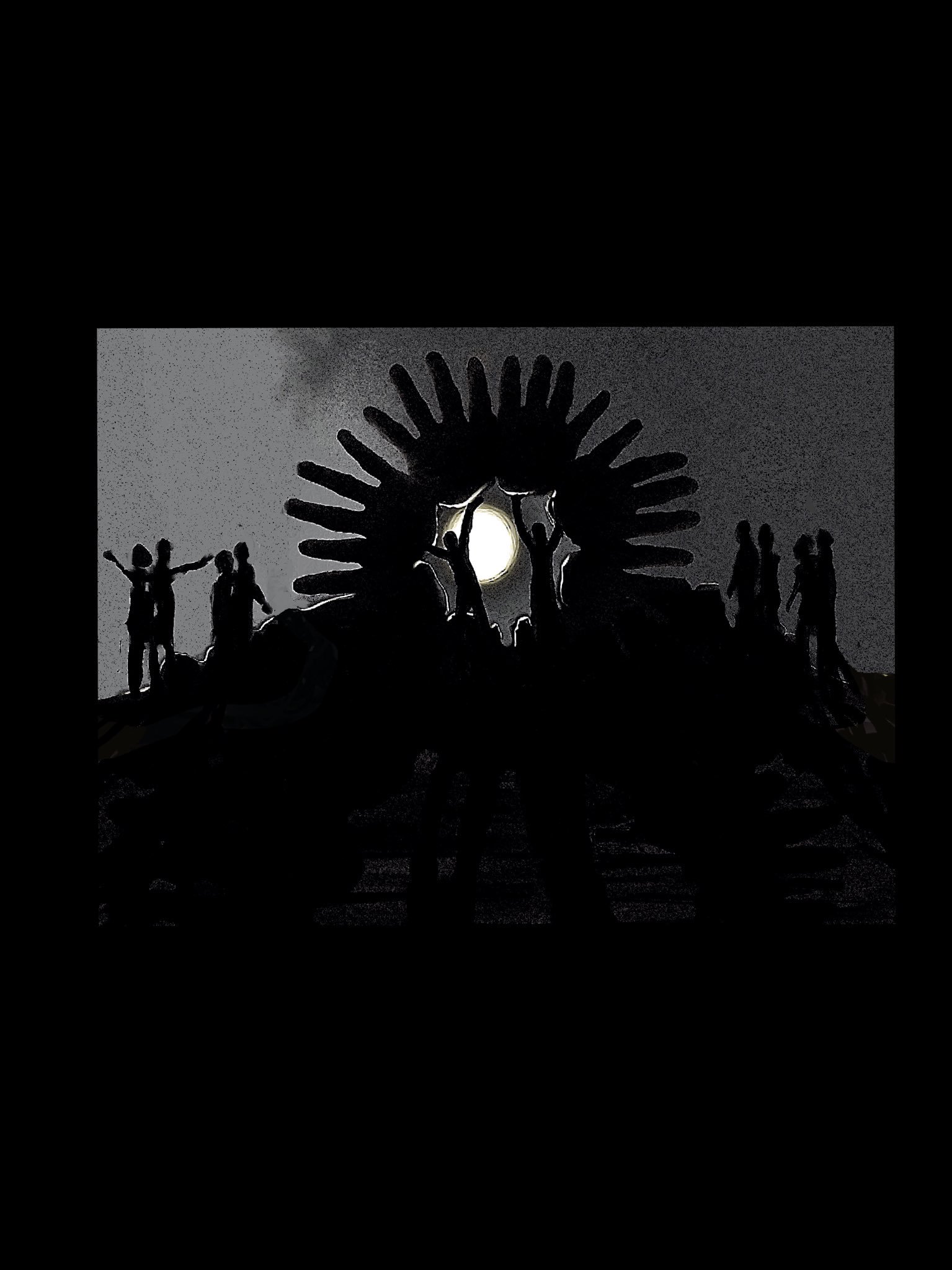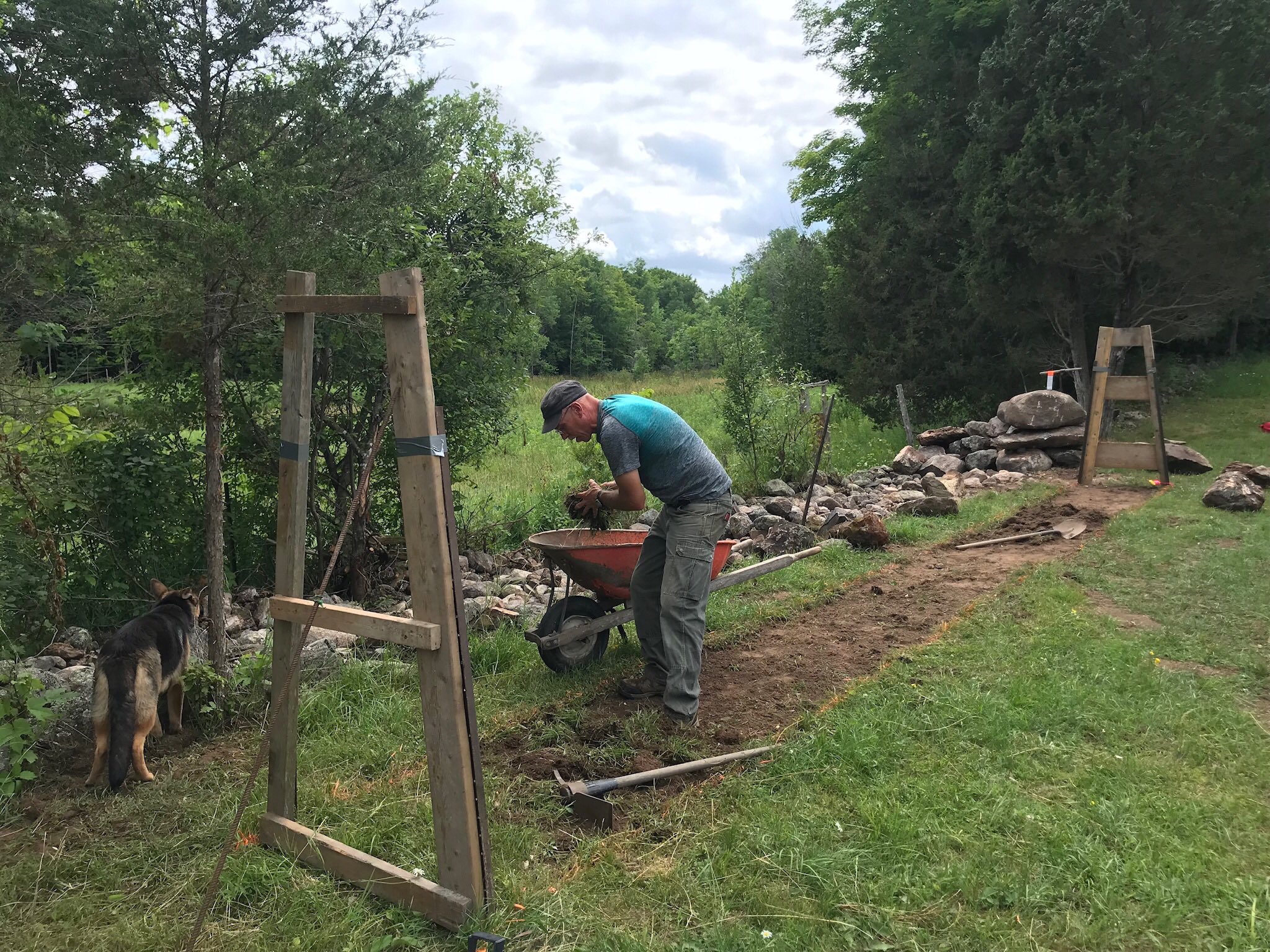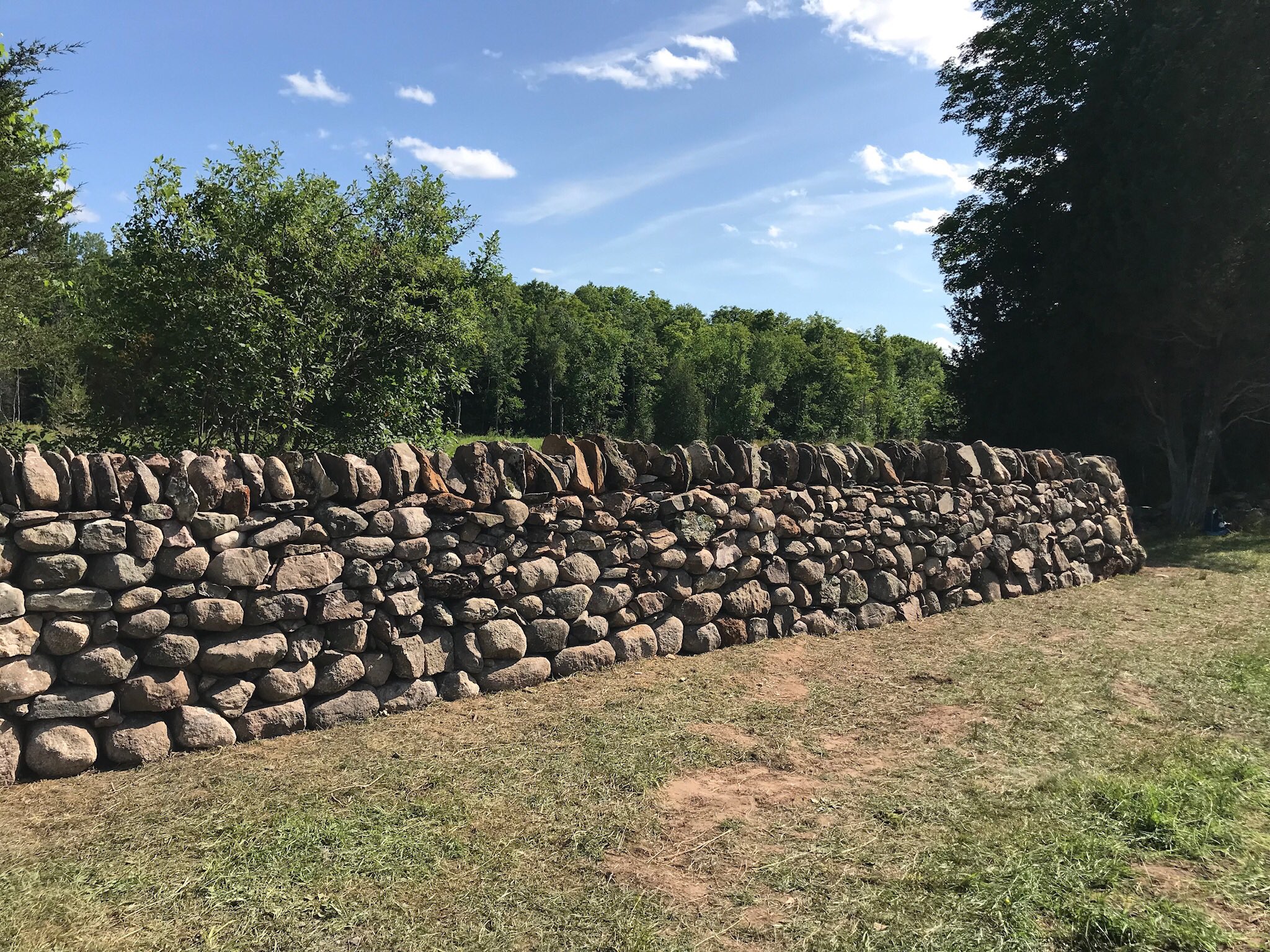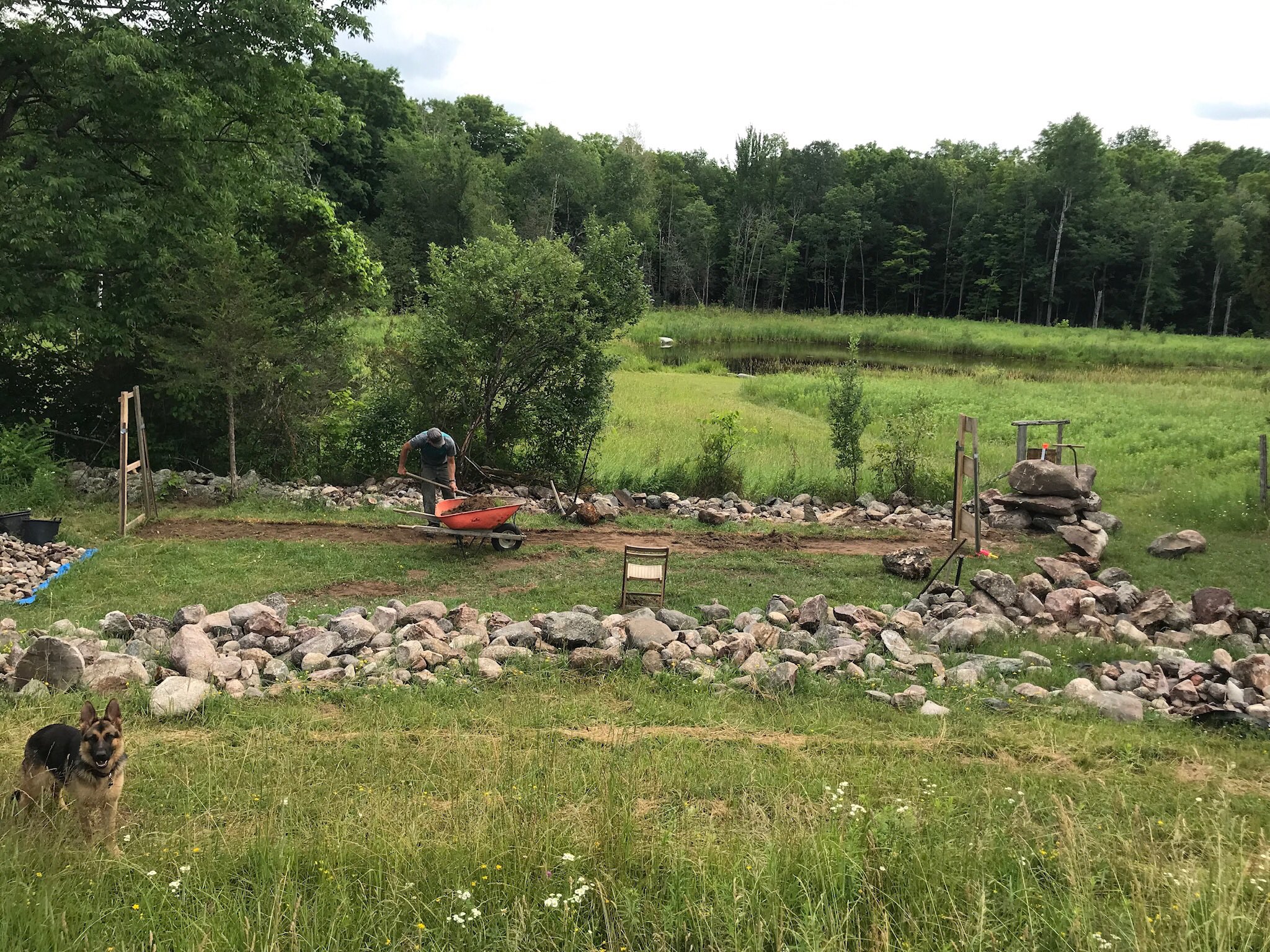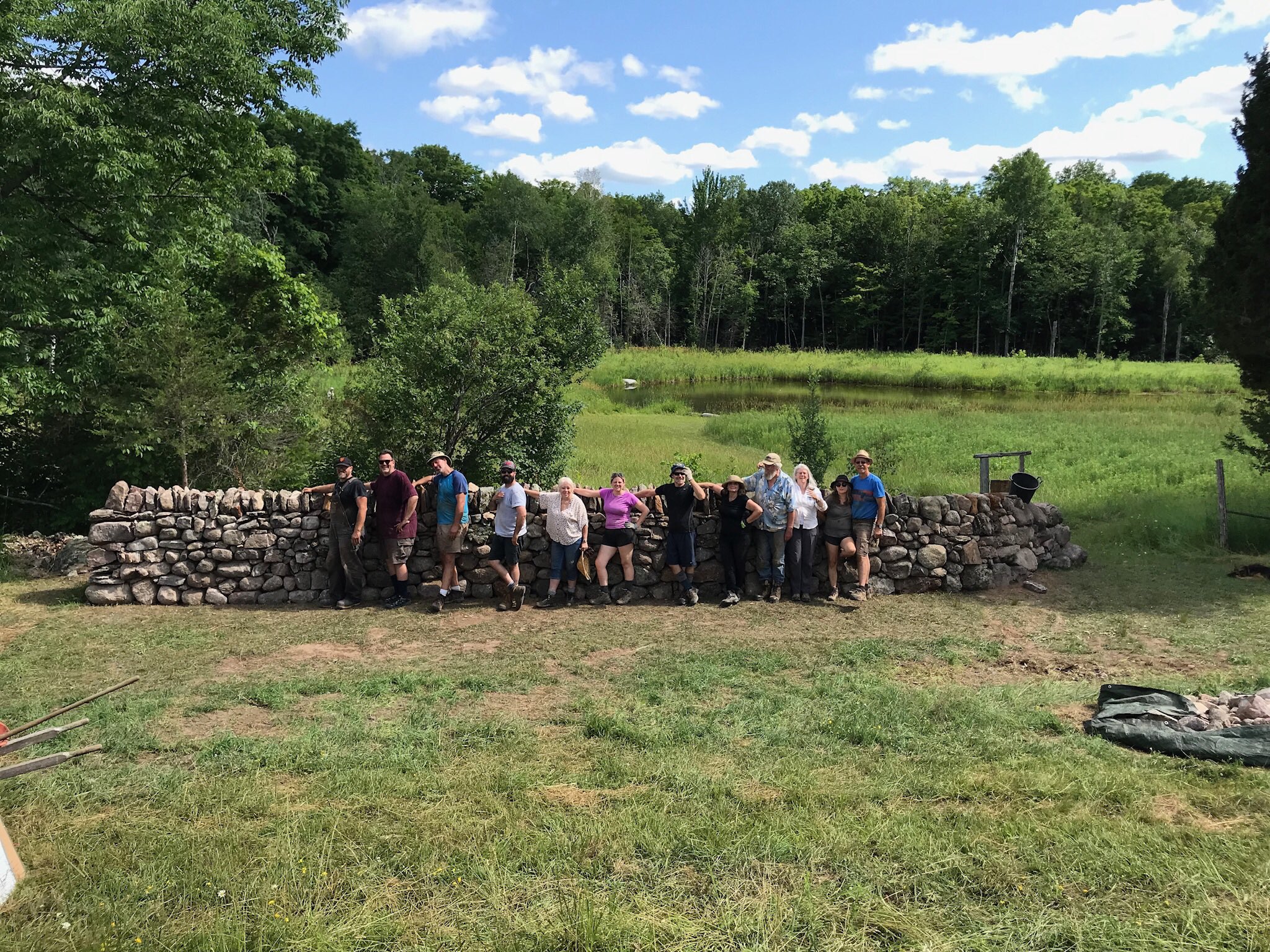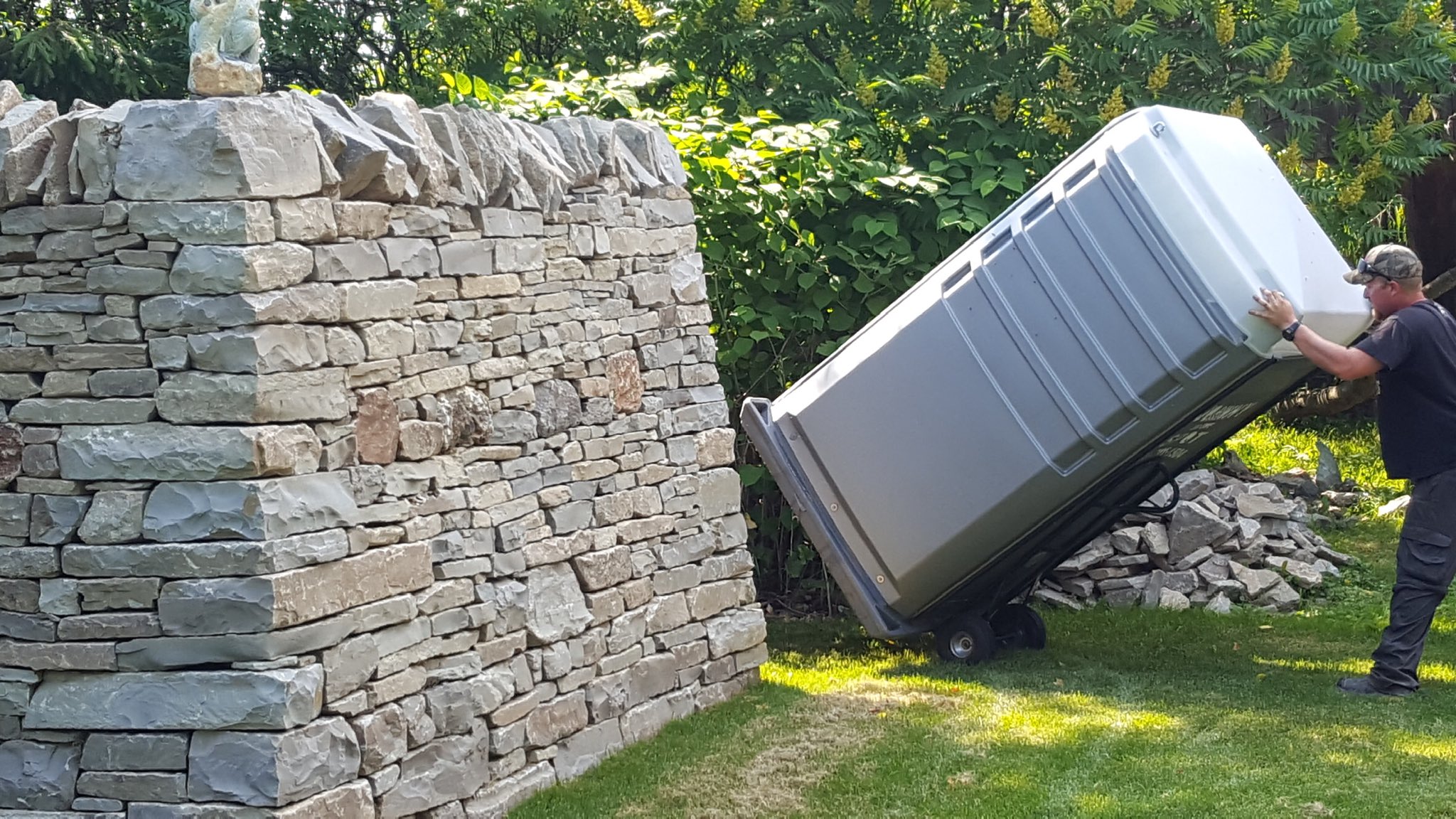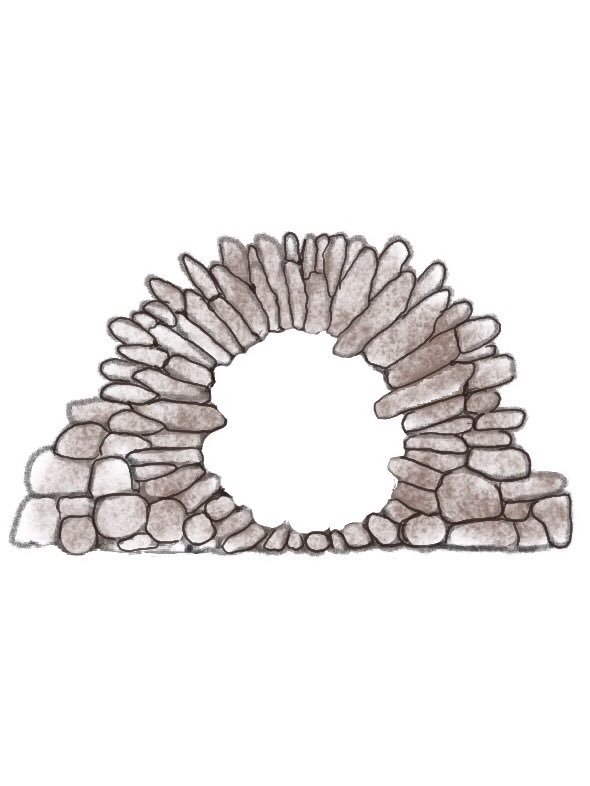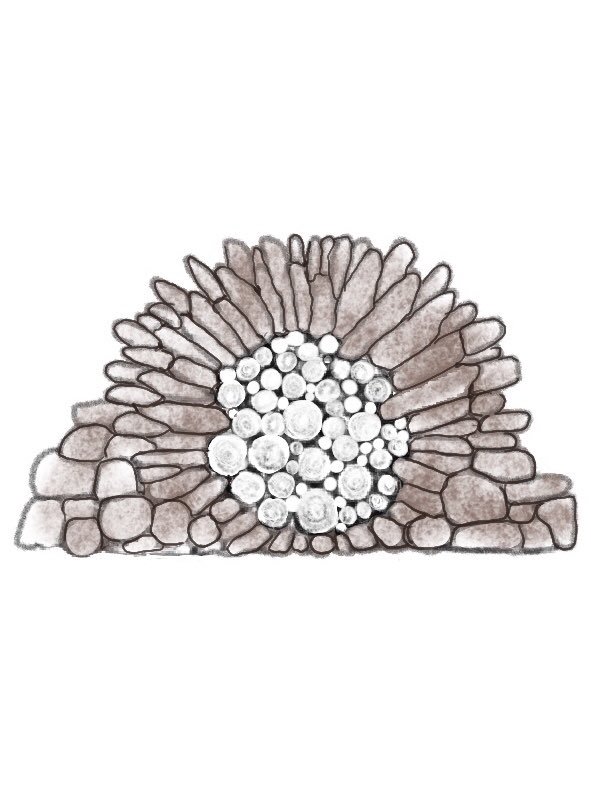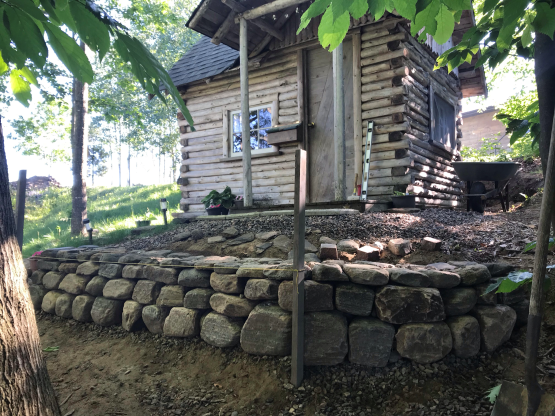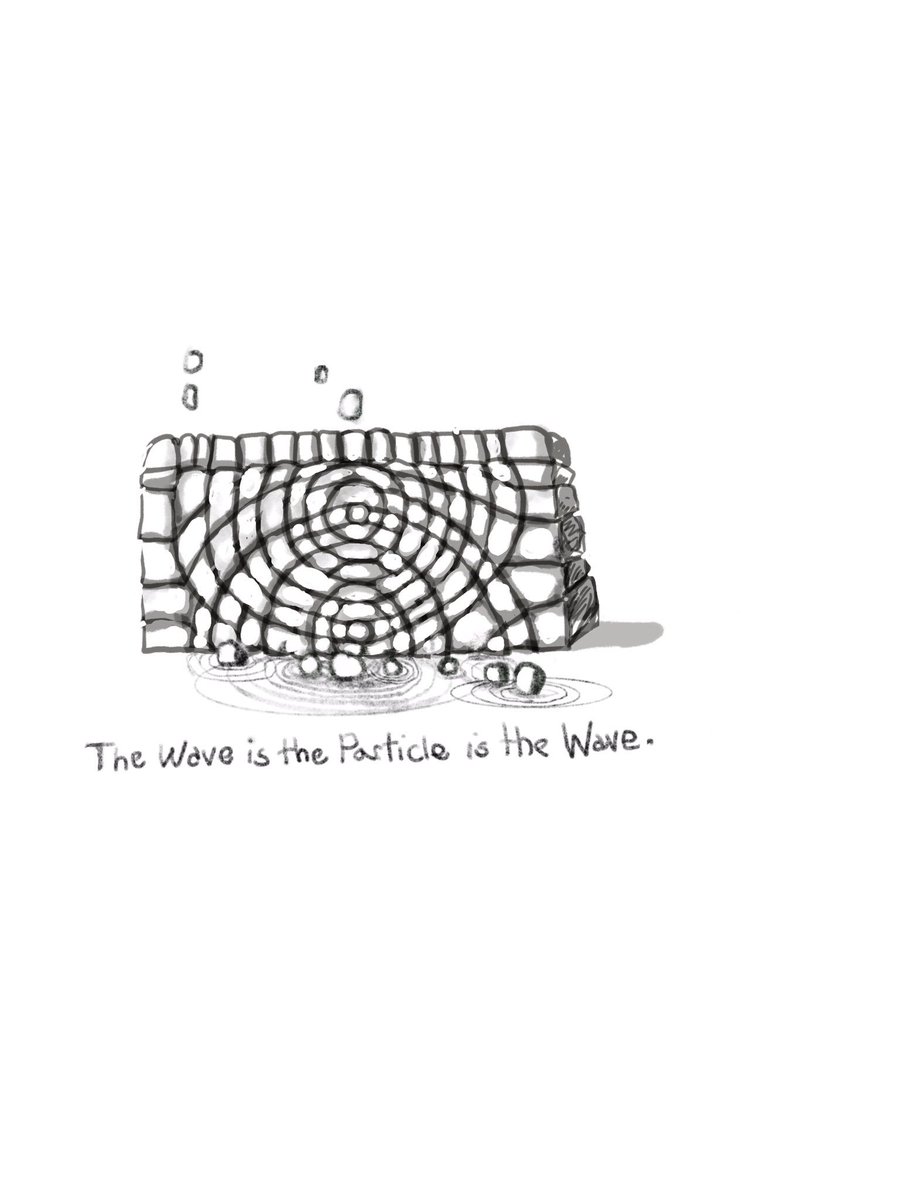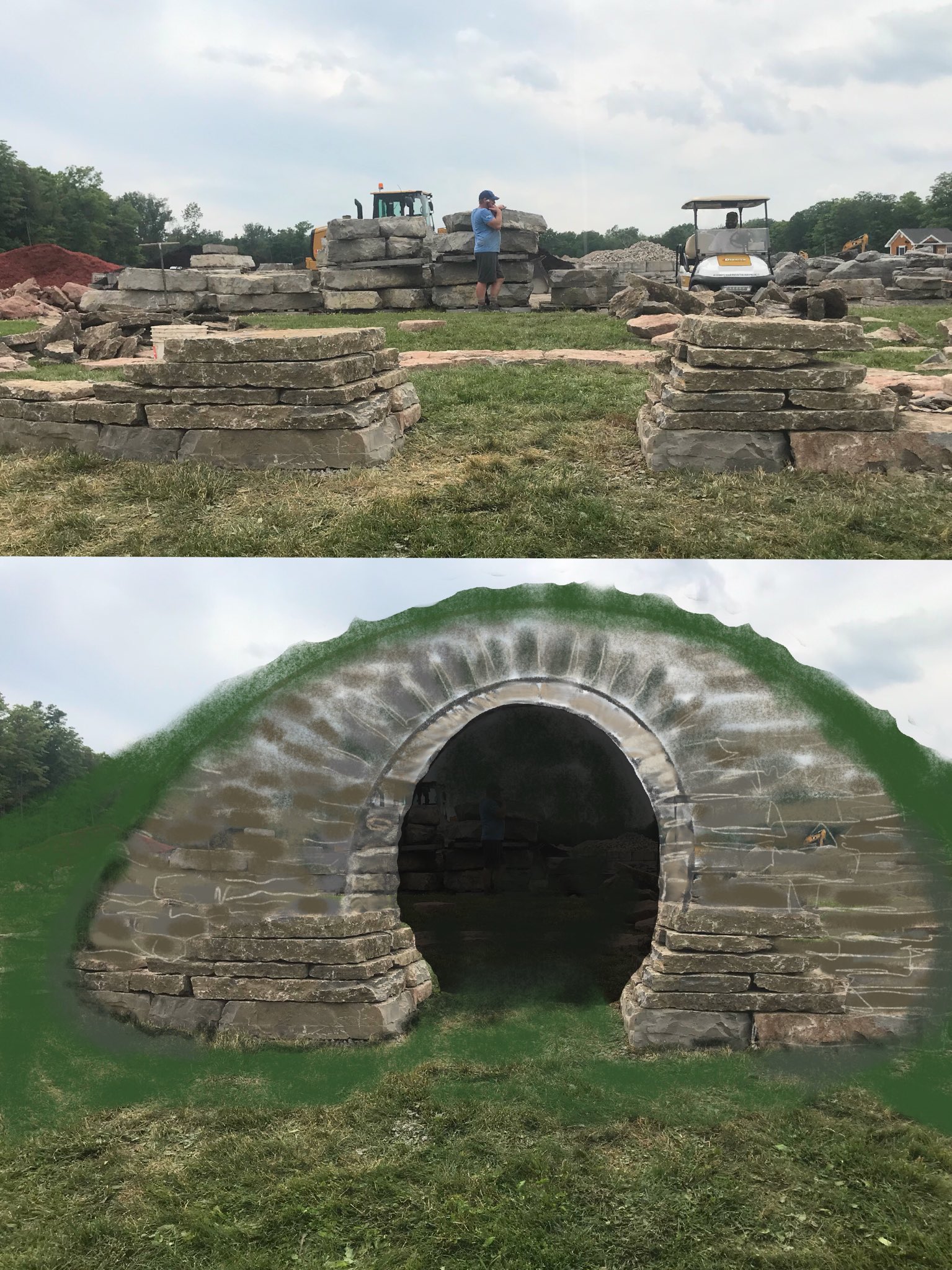With a sturdy foundation in place, it was onwards and upwards for the stone garden terrace.
Inside our cottage, Nadine, her mom and a friend were grouping like-minded pieces for a jig-saw puzzle depicting a classic canoe. Outside, I was using the same approach for the stones that would form the second and third courses of the terrace. With like-minded stone close at hand, I could move faster once I started building each course.
Smelling the roses
My dry-stone mentor John Shaw-Rimmington had advised our class at Haliburton School for the Arts to step back now and again — to see from a distance how the stones fit together.
This was the stone-walling equivalent of smelling the roses. Sometimes a stone that looked good up close was clearly out of order when seen from afar, and could be adjusted or replaced before it became embedded in the structure.
So I did a lot of stepping back and peering at the little stone terrace as it rose next to the cabin. In fact, whenever Nadine caught a glance at me stone-walling, she said I usually had my hands on my hips, arms akimbo, peering at the stones. For inspiration, I nestled a pot of pink and white impatiens next to the terrace.
A student of mine wrote me a nice letter with a photo of a lovely garden wall he recently completed.
Rocking and rolling
By nudging up the string next to the straight section of terrace, and checking its level, I could chase it upwards in slow motion with the stone-building. Stones that rocked and rolled a bit too much were wedged with thin stone shims to get them to settle down. Each course was carefully packed with hearting to get it tight and ready for the next course.
Next door, the farmer was raking his hay. I could hear the drone of the machine as he swept by. The next day, he came back with the baler and wound the dried hay into huge bundles. They would be wrapped in white plastic, resembling massive puffy marshmallows, and stored outside to give his cows feed through the long winter.
On a misty summer morning, the hay bales loomed large outside our cottage front door.
REPORT THIS AD
A special blend
As the terrace wall came up with each course, I began to backfill it with some better soil. I trundled with the wheelbarrow over to our nearby veggie garden. There a special blend of quadruple mix was concocted, using equal parts of garden soil, compost, peat moss and some worm castings.
This new soil mix was a step up from the sandy clay next to the cabin, and would provide a nutrient-rich bed for the terrace garden, once complete.
To get the terrace as level as possible for the final layer of heavy capstones, I used slimmer stones in the fourth, and penultimate, course. For the freelance curve at the south end, I had cheated, using just three layers of larger stone. The curve dipped slightly off level, but I made a mental note to try to fix that with the capstones.
Piece by piece
The pieces of the puzzle were falling into place. Inside our cottage, the wilderness image of a cedar canvas canoe slowly emerged on our card table as Nadine, Ann and Mary Jo worked on the 1,000-piece jigsaw, after some swimming and kayaking in Minden Lake. Outside, the stone wall was rising.









